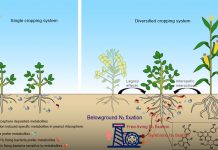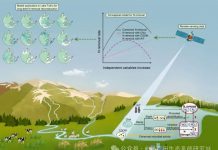Xu ZhaoEmerson D.Nafziger and Cameron M. Pittelkow. Nitrogen rate strategies for reducing yield-scaled nitrous oxide emissions in maize. Environmental Research Letters2017-doi.org-10.1088-1748-9326-aa9007
Abstract
Mitigating nitrogen (N) losses from agriculture without negatively impacting crop productivity is a pressing environmental and economic challenge. Reductions in N fertilizer rate are often highlighted as a solution yet the degree to which crop yields and economic returns may be impacted at the field-level remains unclear in part due to limited data availability. Farmers are risk averse and potential yield losses may limit the success of voluntary N loss mitigation protocols thus understanding field-level yield tradeoffs is critical to inform policy development. Using a case study of soil N2O mitigation in the US Midwest we conducted an ex-post assessment of two economic and two environmental N rate reduction strategies to identify promising practices for maintaining maize yields and economic returns while reducing N2O emissions per unit yield (i.e. yield-scaled emissions) compared to an assumed baseline N input level. Maize yield response data from 201 on-farm N rate experiments were combined with an empirical equation predicting N2O emissions as a function of N rate. Results indicate that the economic strategy aimed at Maximizing Returns to N (MRTN) led to moderate but consistent reductions in yield-scaled N2O emissions with small negative impacts on yield and slight increases in median returns. The economic optimum N rate strategy reduced yield-scaled N2O emissions in 75% of cases but increased them otherwise challenging the assumption that this strategy will automatically reduce environmental impacts per unit production. Both environmental strategies one designed to increase N recovery efficiency and one to balance N inputs with grain N removal further reduced yield-scaled N2O emissions but were also associated with negative yield penalties and decreased returns. These results highlight the inherent tension between achieving agronomic and economic goals while reducing environmental impacts which is often overlooked in policy discussions. To enable the development of more scalable environmental N loss mitigation strategies yield tradeoffs occurring at the critical point of adoption (i.e. the farm-level) should be considered.







